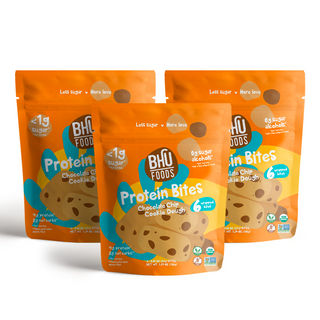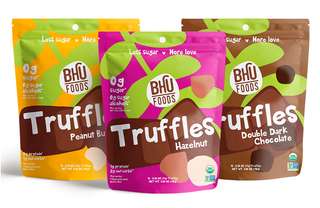
How To Hit Your Weight Loss Goals Fast
If you see a weight loss company’s tagline that says you will lose weight fast, maybe, five pounds in two days, you should not believe them. In retrospect, that is not a safe thing to do. It is probably an extreme weight loss tactic, but one might not be able to maintain it after then.
But if you see one that goes, “lose one to two pounds per week,” then it is the safest one, and you should go for it. Many non-complex actions can engender how to lose weight fast naturally and permanently, and this article will list some of them.
Many diet plans designed to help with weight loss usually leave the person unsatisfied and hungry. Some even leave out important food groups that are not sustainable. These are key reasons one might find it difficult to stay true to a diet often.
It needs to be said that people have diverse eating styles, patterns, and unique needs. What works for one individual may not work for the other.
While some people will find that they can lose weight fast and more effectively by employing a diet that focuses on whole foods, others might lose weight by eating low-carb meals. However, there are general principles that prove helpful when looking for the fastest way to lose weight in a month.
Tips To Help You Hit Your Weight Loss Goals Quickly
Below are some weight management strategies and methods on how to lose weight consistently and effectively. However, keep in mind that weight loss is seldom sustainable. Focusing on lasting habits that one can follow over a long span of time will surely enhance one’s health and are more likely to make weight loss become a long-lasting prospect.
Below are these natural weight loss tips:
Intermittent fasting
This type of fasting refers to an eating pattern that entails consistent short-term fasts and eating meals in a shorter span of time in one day.
Various studies have shown that short-term intermittent fasting can induce proper weight loss in people who are obese. It can be done for about 24 weeks.
Below are the most prevalent methods of intermittent fasting:
Alternate day fasting: This entails eating and fasting on alternate days (one day on, one day off). On the days of eating, one should eat normally and not gorge oneself. A modified version involves consuming about 25-30% of the energy needed by the body on fasting days.
This involves fasting two days every week. On a fasting day, one can consume between 500-600 calories.
Another variation is to go without food for 16 hours and eat between the 8-hour period. Usually, the 8-hour window falls between 12 pm to 8 pm. Studies on this variation have shown that eating in a controlled span of time induced weight loss and made people consume fewer calories than usual.
Ensure you develop a healthy meal pattern on non-fasting where applicable and avoid overeating.
Getting Enough Sleep
Various studies have discovered that getting less than five to six hours of sleep each night is connected to many cases of obesity, and there are many reasons for this.
Research records that a lack of sleep diminishes metabolism, which is the process where the body converts calories to energy. When metabolism is not happening at a reasonable rate, the body stores the unused, unconverted energy as fat around the muscles. Furthermore, insufficient sleep can enhance the production of cortisol and insulin, which also instigates fat storage.
The longer a person sleeps affects the body’s regulating of ghrelin and leptin, the appetite-controlling hormones. Leptin, in particular, sends the signal of fullness to the brain.
Mindful eating
Mindful eating refers to the practice of paying attention to where and how you eat your meals. This practice is designed to help people enjoy what they eat and sustain a healthy weight.
Trying to keep track of meals and drinks in this age where everyone is busy can be problematic. Many people eat on the go, which means quickly and without measure. Hence, it’s no surprise that many people have no idea what or how much they consume.
Techniques for mindful eating include:
- Sit and take time to eat. Devote time to the food and ensure you enjoy eating.
- Eliminating distractions during meals: Remove distractions such as television, phones, and laptops.
- Eat slowly. You should take your time when eating to allow yourself to savor the meal. This helps with weight loss as it gives one’s brain enough time to identify and pass signals that define fullness. This is very effective and helps prevent over-eating.
- Select your meals intentionally. Choosing which meals will benefit you in the long term (either hours or months) in terms of nourishment and satisfaction.
Increasing Protein Intake Levels
Increasing’s one protein consumption can help reduce their appetite and avoid the loss of muscle mass. It is one good way to if you are looking for how to lose weight healthfully.
Consuming between twenty-five and thirty grams of protein with each meal is proven to enhance appetite control and manage body weight. It is vital to consume at least a whole serving of high-quality protein with each meal.
Also, many factors affect what one should eat, and the quantity one should consume. These factors include age, body mass, diseases, menopause, and body type. There are different diets for different people, and while one type of diet can work for a group of people, each person’s diet might need a bit of tweaking to find the perfect diet.
Consume more plants
Research has shown that plant-based diets do more than facilitate weight loss. Also, they are easier to stick to compared to low-calorie diets. Let’s not forget that they are filled with many nutrients and possess several health benefits.
Plants related meals promote weight loss simply because they are rich in water and fiber, which are calorie-free substances. However, they fill up the belly, so you feel full. A south American study even discovered a direct relationship between weight loss and vegetable and fruit consumption; the higher the consumption, the higher the weight loss rate.
The general recommendation is to start with five servings of plant-based products each day and move further. Green smoothies, salads, vegetables (along with lunch), and fruit (as dessert) are options. Vegetables can also go with in soups and pasta dishes. This is another good way to learn how to lose weight fast naturally.
Conclusion
It is essential to know that there are no quick solutions regarding weight loss. Drastic weight loss methods are not easily followed over a long time. Each solution takes time to give results. Adopting nutritious, balanced diets is the best way to hit and sustain a healthy weight. Ensure you exercise each day, add proteins, fruits, vegetables, and whole grains to your meals, and you’re good to go. Cheers!
Frankie Krygsman is a certified Life Coach and certified nutritionist (NASM and ISSA) from San Diego. He was recently awarded “2022 Transformation Coach of the year” by the Brave Thinking Institute. Frankie has also been a personal trainer who specializes in Dr. Eric Berg's methodology focusing on Ketosis and IF. Frankie has helped thousands of clients either by working with him personally or following the guidelines in his eBook "Kinetic Ketosis." Frankie focuses on helping people lose weight, increase energy levels, and improve sleep quality.












































